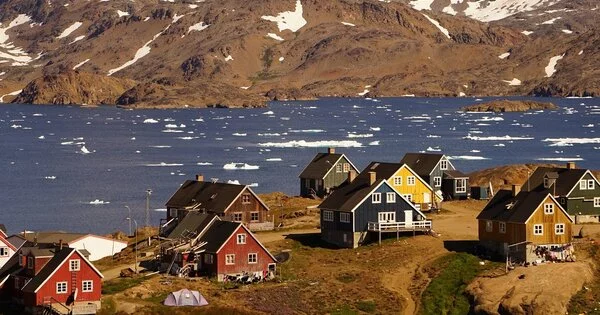According to a study published on June 9th in the journal Human Genetics and Genomics Advances, a genetic variant found in nearly 30% of Greenlanders is linked to high cholesterol and an increased risk of cardiovascular disease. This is the first report of an association between this Arctic-specific variant, known as p.G137S, and cardiovascular disease, according to the authors.
“P.G137S has a significant population-level impact due to its high frequency and large effect sizes, increasing the risk of high cholesterol and cardiovascular disease for up to 30% of the Greenlandic population,” says co-first study author Emil Jorsboe of the University of Copenhagen. “As a result, the variant is a potential marker for early intervention in Arctic populations.”
Cardiovascular disease is the leading cause of death in many countries around the world. It is strongly linked to high levels of LDL cholesterol. The LDL receptor is responsible for the uptake of LDL-cholesterol particles from the blood into tissues such as the liver (LDLR). High cholesterol levels in the bloodstream are commonly caused by mutations in the LDLR gene, which encodes this receptor.
Our results showed that the p.G137S variant had an even larger impact on the lipid profile of Greenlanders than previously reported. This variant further highlights the importance of carrying out genetic studies in smaller populations like the Greenlandic.
Emil Jorsboe
Because of increased life expectancy and changing lifestyles, the prevalence of cardiovascular disease among Greenlanders is expected to rise in the future. The common Arctic-specific LDLR variant p.G137S was recently linked to high cholesterol levels. However, it was unclear whether this variant is also linked to an increased risk of cardiovascular disease until now.
In the new study, Jorsboe and his collaborators examined this possibility in a group of 5,063 Greenlanders. Roughly 30% of the individuals carried at least one copy of the p.G137S risk allele. Approximately 25% of the heterozygous and 55% of the homozygous carriers had high blood levels of LDL cholesterol.
Moreover, p.G137S was associated with an increased risk of ischemic heart disease, peripheral artery disease, and coronary operations. Yet only a low proportion of individuals with very high levels of LDL cholesterol were receiving cholesterol-lowering therapy. In addition, elevated levels of LDL cholesterol for p.G137S carriers were independent of age, indicating that these individuals would benefit from early intervention and treatment.

“Our results showed that the p.G137S variant had an even larger impact on the lipid profile of Greenlanders than previously reported,” Jorsboe says. “This variant further highlights the importance of carrying out genetic studies in smaller populations like the Greenlandic.”
According to the authors, the findings suggest that a screening program for the p.G137S variant could be extremely useful for identifying individuals at high risk for cardiovascular disease, potentially improving preventive care and public health.
Some of the study’s participants with high cholesterol may have begun taking statins during the study, and their long life expectancy may be due to their use of statins. Similarly, some of them may have begun eating healthier during the study, which may have increased their life expectancy.
At least five of the study’s authors have previously published books that question the relationship between cholesterol and heart disease. Dr. Uffe Ravnskov is the lead author of the book ‘The Cholesterol Myths: Exposing the Fallacy That Saturated Fat and Cholesterol Cause Heart Disease.’ Another of the authors, London cardiologist Dr. Aseem Malhotra, is a vocal opponent of statins.
“We believe an intervention study, in which one could investigate how cholesterol-lowering medicine improves the lipid profile in carriers of this genetic variant, would be very important,” Jorsboe says. “Determining the best treatment and prevention strategies for people who carry this variant is critical, especially given that one-third of the Greenlandic population is at risk.”





